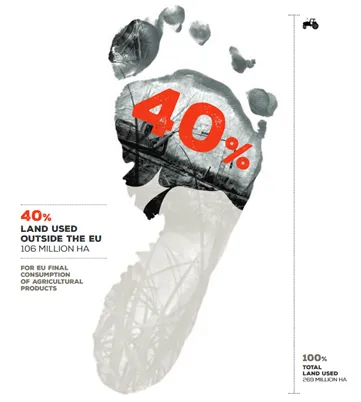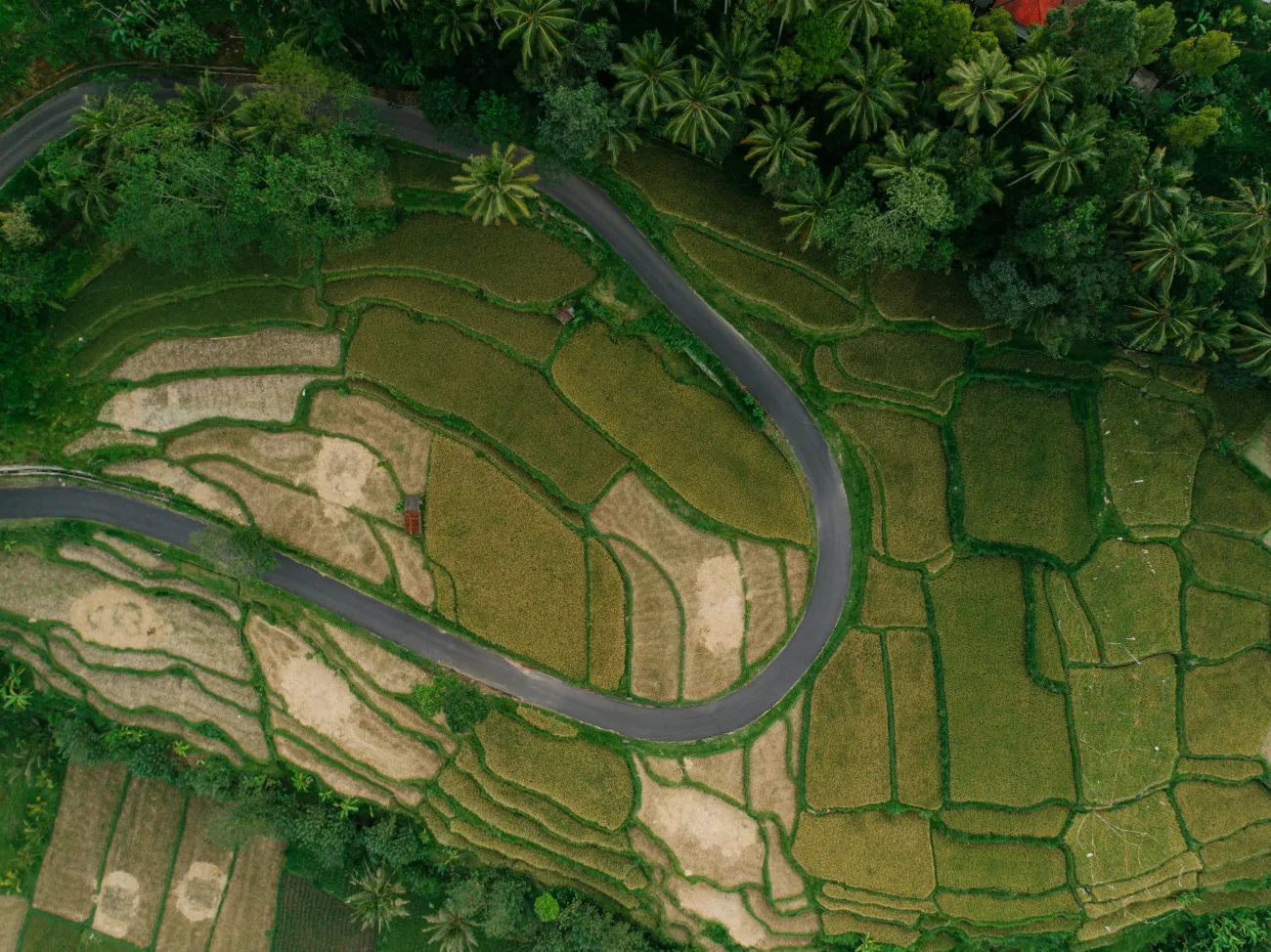The EU uses more than its fair share of global land; in 2010 the amount of land needed to satisfy our consumption of agricultural goods and services was 43% greater than the land available within its boundaries. This report stresses the responsibility that the EU has to measure, monitor and reduce its global land footprint.

They highlight a number of areas where improvement is needed:
- Further efforts are needed to improve the databases for grassland, forested land, mining land and built up areas
- Nearly ¾ of the EU land footprint is related to the consumption of animal products; there needs to be a shift in consumption patterns. There is also concern with increasing vegetable oil demand for non-food purposes like bioenergy, particularly when the land is in tropical biodiverse regions.
- The EU needs to acknowledge and tackle the social implications of its land footprint: land expansion into natural land areas, land degradation, deforestation, biodiversity loss, land grabbing, unequal appropriation of land resources etc.
- The land footprint needs to have a role in policy making to ensure sustainable land use; both the consuming and producing countries bear a responsibility for the environmental and social impacts of agricultural production.
Current land-related EU policies are only territorial in focus, and due to the EU’s increasing dependence on outside land, it is vital that EU policies take into account consumption based tools and indicators.
The report claims that using the land footprint approach has a number of benefits:
- It identifies land use impact hotspots in producer countries.
- It aims to make environmental and social impacts of EU consumption spatially explicit
- It allows calculation and monitoring of per-capita land consumption, which can help to increase awareness of high footprint consumption patterns and encourage policy makers to support a shift towards more sustainable consumption.
Finally, the report suggests a number of citizen lead actions that can reduce the EU land footprint:
- Clothing libraries – lending out clothes for small fee to tackle the changing trends leading to clothes being worn a few times only.
- Sharing land to grow food – using garden spaces to grow food can reduce pressure on global land resources.
- Product packaging – reducing the packaging you use and chose packaging free food when possible. The Land Footprint for packaging in the toy and the smartphone sectors respectively account for 84% and 55% of the total land required for the final products.
- Repair cafes – to tackle the throw away culture that results from it being cheaper to buy a replacement than to repair our electricals, repair cafes are popping up that allow people to learn how to repair their phones. The average smartphone has a land footprint of 18 metres squared.
- Sharing with neighbours – particularly with rarely used items like drills, sewing machines and rollerblades.
Abstract
The European Union uses more than its fair share of global land. In 2010, the amount of land used to satisfy our consumption, solely of agricultural goods and services, amounted to 269 million hectares – that’s 43% more agricultural land than is available within the EU itself and an area almost the size of France and Italy used outside of our borders. The significant use of land outside of the EU is potentially linked with high environmental and social impacts. Stewardship over shared global land resources is crucial in order to safeguard natural areas and essential ecosystems, and to ensure equitable consumption of land amongst global citizens and within planetary boundaries.
Read the full report here.
You can read related research by browsing the following categories of our research library:
Environmental Policy, Household Food Consumption, Consumption and Production Trends and Imports & Exports.




Comments (0)